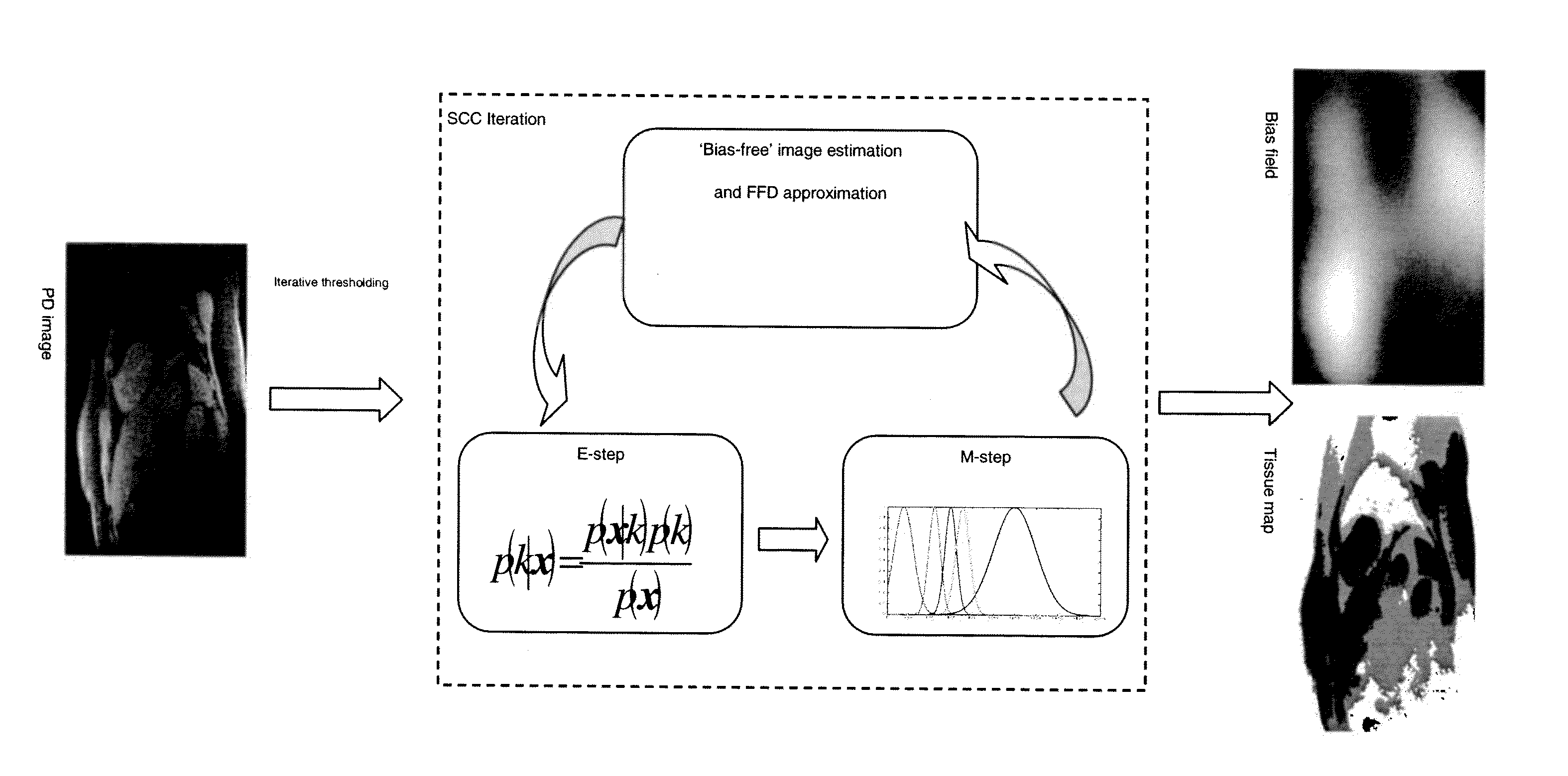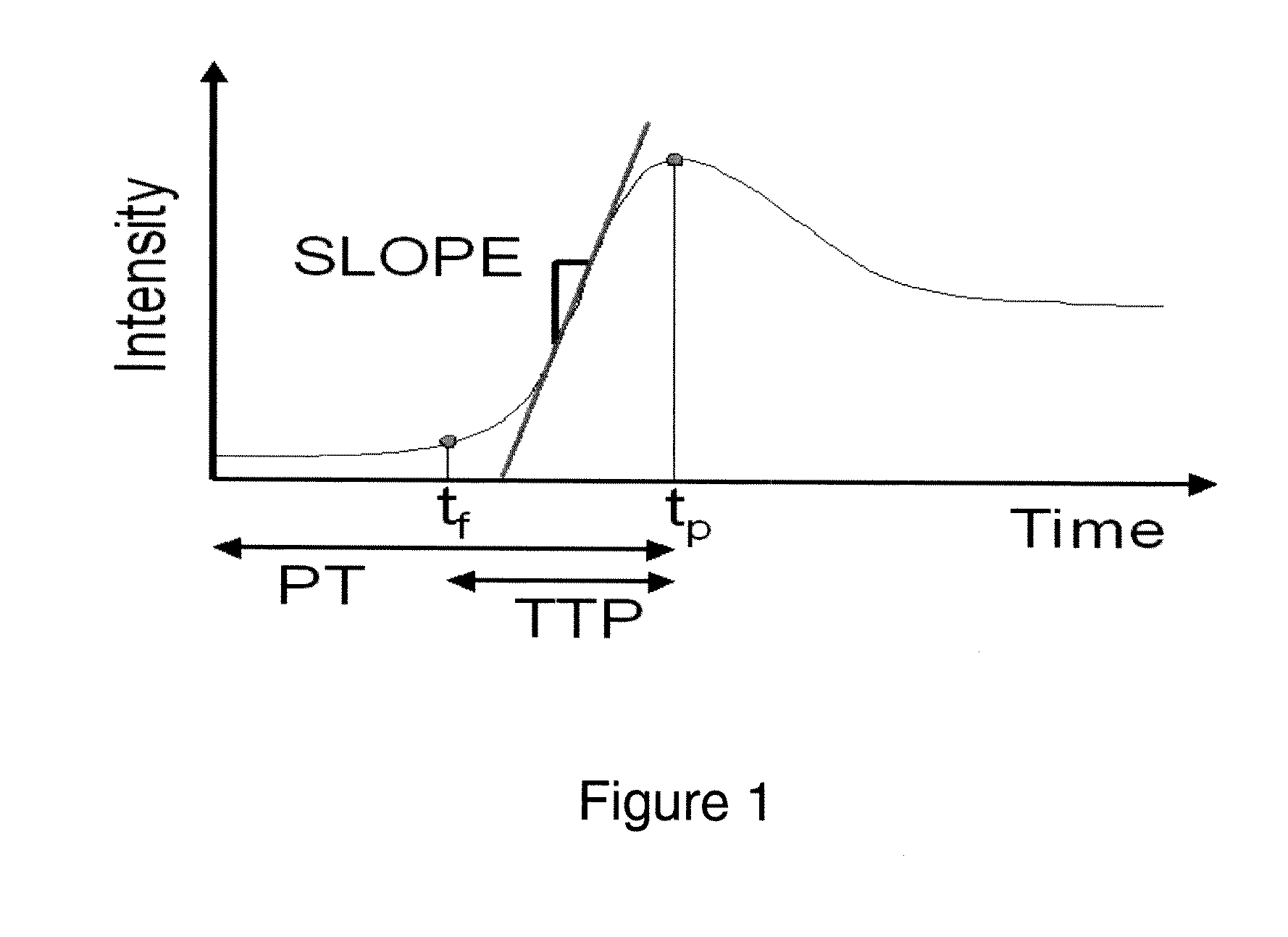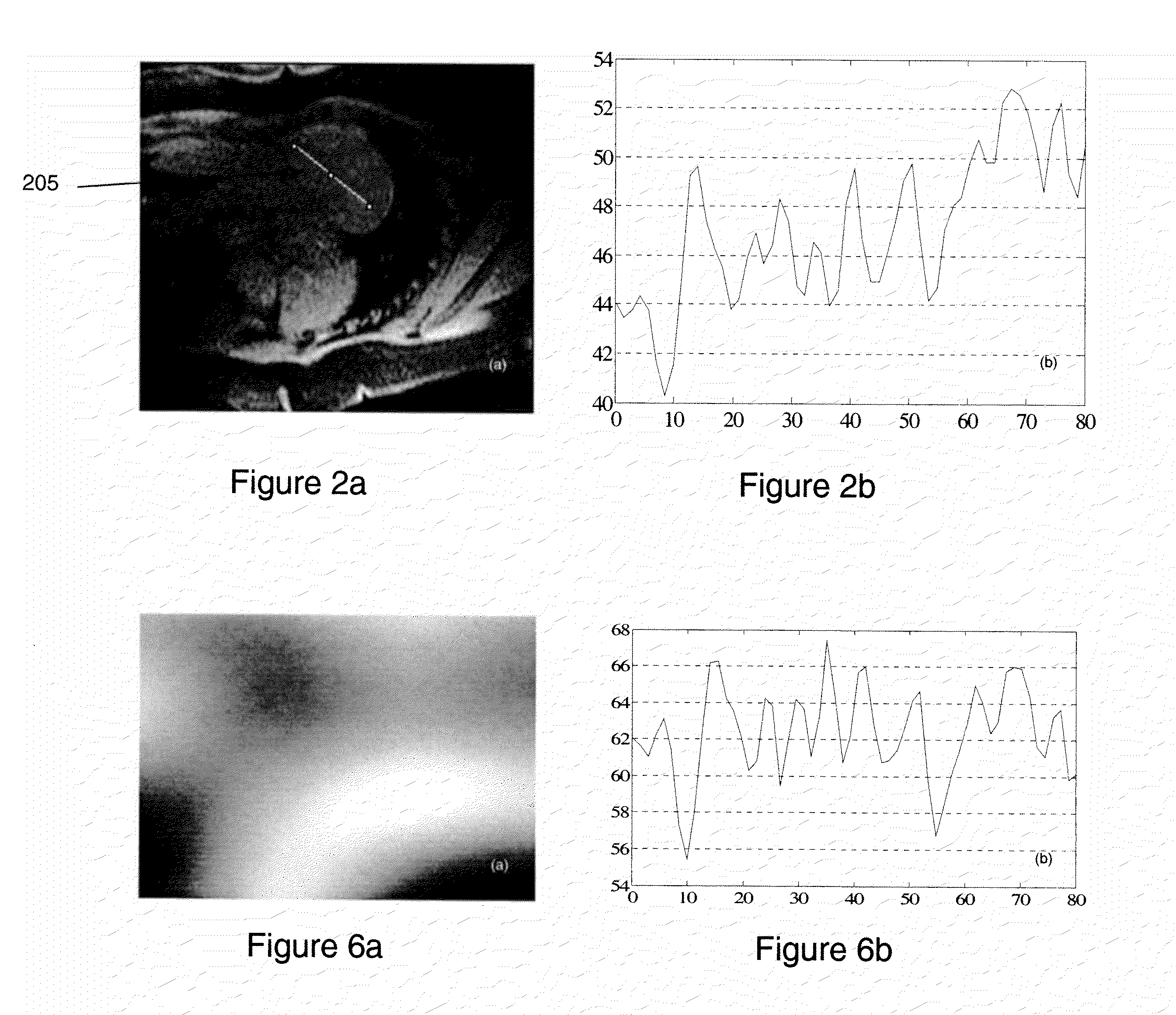Direct and Indirect Surface Coil Correction for Cardiac Perfusion MRI
a surface coil and correction technology, applied in the field of cardiac imaging, can solve the problems of inhomogeneity correction, inability to acquire an equal amount of interest in the field of cardiac mr imaging, and drifting of signal intensities, so as to improve the signal-to-noise ratio
- Summary
- Abstract
- Description
- Claims
- Application Information
AI Technical Summary
Benefits of technology
Problems solved by technology
Method used
Image
Examples
Embodiment Construction
[0026]FIG. 3 is a block diagram of a conventional MRI scanner 300 (simplified) that performs cardiac perfusion MR imaging in accordance with the present invention. A main magnet 312 generates a strong static magnetic field in an imaging region where the subject (i.e., patient) is introduced. The magnet 312 is used to polarize the target cardiac area, i.e., certain atoms in the target cardiac area that were previously randomly-ordered become aligned along the magnetic field. A gradient coil system 318, having a gradient coil subsystem 318a and a gradient coil control unit 319, generates a time-varying linear magnetic field gradient in respective spatial directions, x, y and z, and spatially encodes the positions of the polarized or excited atoms. An RF system 322, having an RF coil subsystem 324 and a pulse generation unit 326, transmits a series of RF pulses to the target cardiac region to excite the “ordered” atoms of the target cardiac area. The RF coil subsystem 324 may be adapte...
PUM
 Login to View More
Login to View More Abstract
Description
Claims
Application Information
 Login to View More
Login to View More - R&D
- Intellectual Property
- Life Sciences
- Materials
- Tech Scout
- Unparalleled Data Quality
- Higher Quality Content
- 60% Fewer Hallucinations
Browse by: Latest US Patents, China's latest patents, Technical Efficacy Thesaurus, Application Domain, Technology Topic, Popular Technical Reports.
© 2025 PatSnap. All rights reserved.Legal|Privacy policy|Modern Slavery Act Transparency Statement|Sitemap|About US| Contact US: help@patsnap.com



